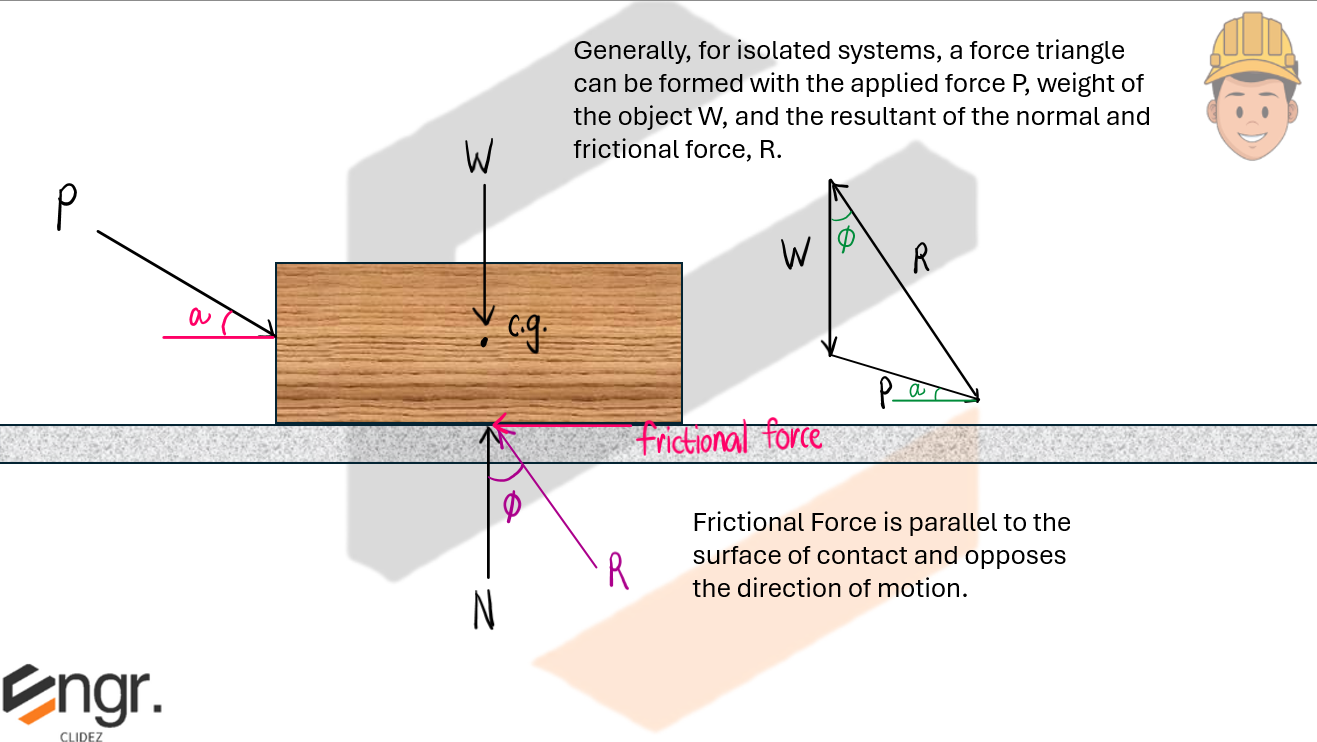In the study of statics of rigid bodies, understanding the nature of friction is essential when analyzing surfaces in contact. Friction is the resistive force that opposes relative motion, and it occurs in several forms:
In this course, we will focus exclusively on dry friction, or Coulomb friction, as it directly applies to rigid body problems involving surfaces in contact—such as blocks on inclined planes, wedges, screws, and belt systems.
Dry friction has several key characteristics: it acts tangentially to the contact surface, opposes the direction of impending or actual motion, and is independent of the contact area.
The maximum force of static friction is proportional to the normal force and is given by:
where \( \mu_s \) is the coefficient of static friction. Once motion begins, kinetic friction takes over and is slightly less than the maximum static friction:
Understanding these principles is crucial for solving equilibrium problems where friction plays a limiting or stabilizing role.
For isolated systems in static friction, a force triangle can be constructed using:

When the applied force \( \alpha = 0^\circ \), meaning the force \( P \) is purely horizontal, the triangle formed by \( W \), \( P \), and \( R \) becomes a right triangle. This triangle illustrates the angle of friction \( \phi \), which is the angle between the normal force \( N \) and the resultant force \( R \).
Frictional Force is always parallel to the surface of contact and opposes the direction of motion. The applied force \( P \) may act at an angle \( \alpha \), and depending on its direction, the system may be in equilibrium, pending motion, or moving.
The vector diagram (force triangle) helps visualize how the forces relate and how the angle of friction \( \phi \) plays a role in determining the system's stability or motion.








